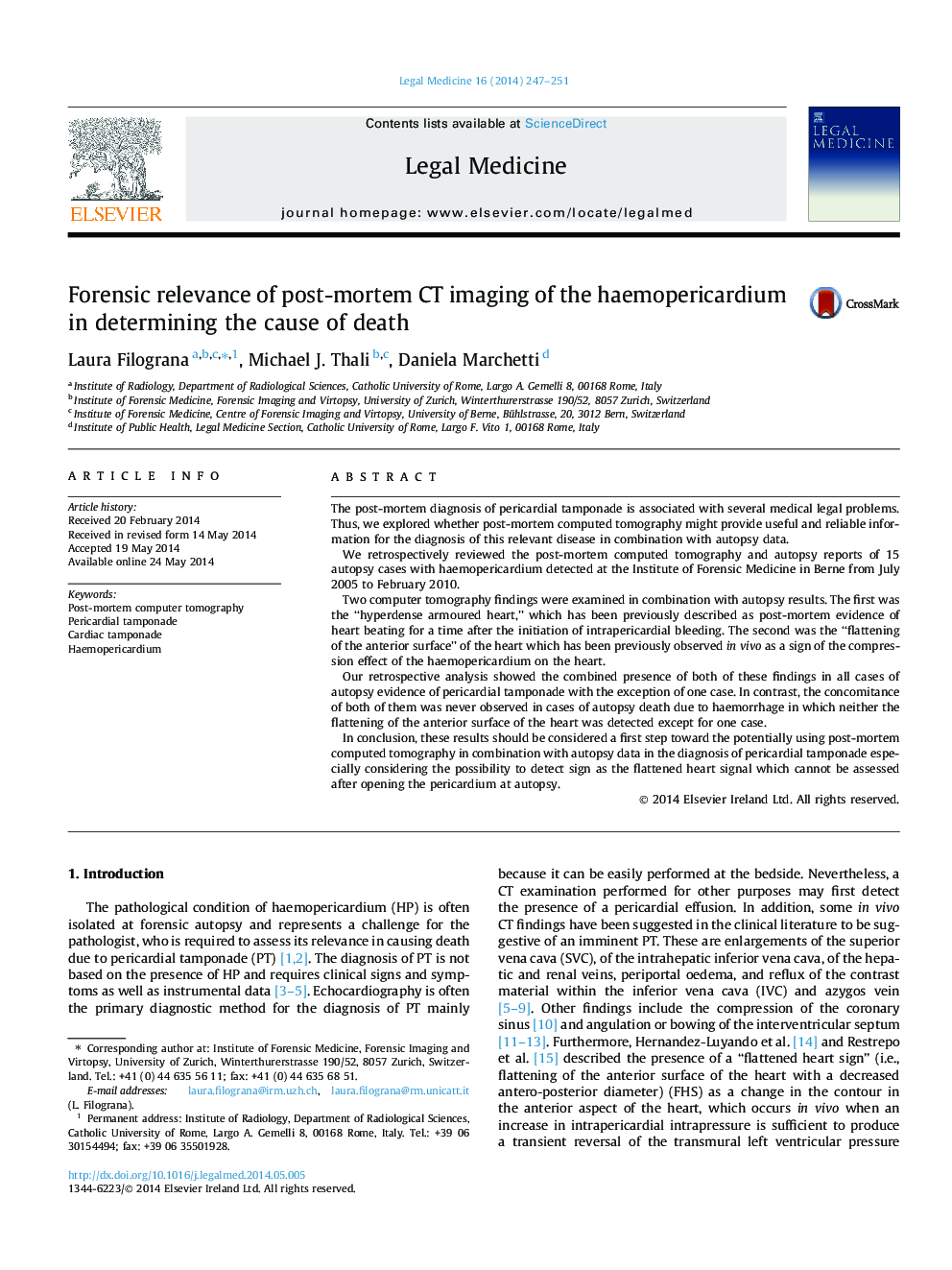| کد مقاله | کد نشریه | سال انتشار | مقاله انگلیسی | نسخه تمام متن |
|---|---|---|---|---|
| 103576 | 161388 | 2014 | 5 صفحه PDF | دانلود رایگان |

• We reviewed the post-mortem CT and autopsy reports of 15 deaths with haemopericardium.
• We focused on the following two CT findings: “hyperdense armoured heart” and the flattening of the anterior surface of the heart.
• In all cases of autopsy evidence of pericardial tamponade with the exception of one case both these findings were present.
• On the contrary, they were not observed in cases of autopsy death due to haemorrhage.
• Post-mortem computed tomography in combination with autopsy data is useful in the diagnosis of pericardial tamponade.
The post-mortem diagnosis of pericardial tamponade is associated with several medical legal problems. Thus, we explored whether post-mortem computed tomography might provide useful and reliable information for the diagnosis of this relevant disease in combination with autopsy data.We retrospectively reviewed the post-mortem computed tomography and autopsy reports of 15 autopsy cases with haemopericardium detected at the Institute of Forensic Medicine in Berne from July 2005 to February 2010.Two computer tomography findings were examined in combination with autopsy results. The first was the “hyperdense armoured heart,” which has been previously described as post-mortem evidence of heart beating for a time after the initiation of intrapericardial bleeding. The second was the “flattening of the anterior surface” of the heart which has been previously observed in vivo as a sign of the compression effect of the haemopericardium on the heart.Our retrospective analysis showed the combined presence of both of these findings in all cases of autopsy evidence of pericardial tamponade with the exception of one case. In contrast, the concomitance of both of them was never observed in cases of autopsy death due to haemorrhage in which neither the flattening of the anterior surface of the heart was detected except for one case.In conclusion, these results should be considered a first step toward the potentially using post-mortem computed tomography in combination with autopsy data in the diagnosis of pericardial tamponade especially considering the possibility to detect sign as the flattened heart signal which cannot be assessed after opening the pericardium at autopsy.
Journal: Legal Medicine - Volume 16, Issue 5, September 2014, Pages 247–251